Rafts made from water hyacinth stems woven with coconut fiber and straw help farmers in Bangladesh cultivate crops even during the flood season. This model has become a low-cost and effective solution to adapt to climate change, providing sustainable income for people in flood-prone areas.
In Barisal, a southern region of Bangladesh, vast fields of crops float on water. People grow tomatoes, pumpkins, potatoes, beans, eggplants, cucumbers, and more. When the water rises, the gardens float too.
Speaking to the press, Mohammad Mohasin, a third-generation farmer of floating farms, said the model brings him an income of 70,000 taka (658 USD) per month during the peak harvest season, higher than other farm models.
[caption id="attachment_377350" align="aligncenter" width="768"]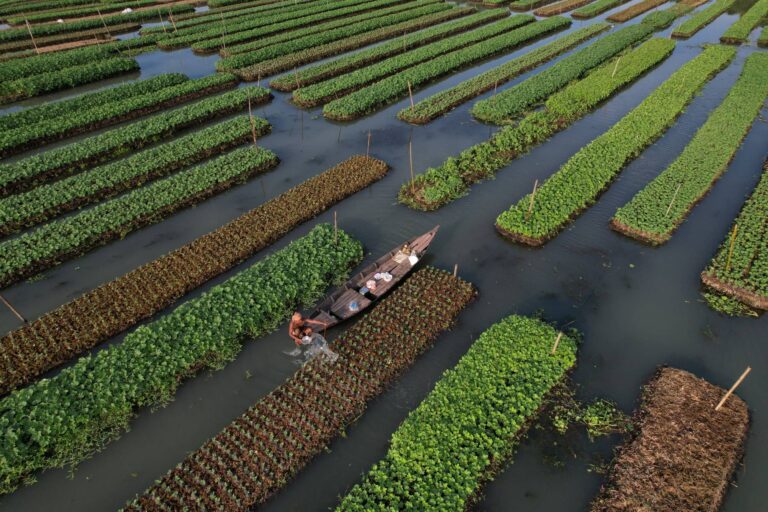 A farmer waters crops grown on a floating raft in Pirojpur, Bangladesh. (Photo: Reuters)[/caption]
A farmer waters crops grown on a floating raft in Pirojpur, Bangladesh. (Photo: Reuters)[/caption]Floating gardens are a traditional hydroponic system that originated in Bangladesh about 400 years ago. Rectangular floating rafts made of water hyacinth, sometimes secured with bamboo poles, rise and fall with the water level. After spreading a layer of soil and manure on the rafts, farmers grow fruits, vegetables and spices.
Low costs make floating gardens a viable option for farmers in flood-prone areas of Bangladesh. They also offer other benefits: The water around the rafts can be used to raise fish or shelter livestock during heavy monsoons. Many farmers say that even if a cyclone causes irreparable damage, the farms can be rebuilt quickly.
Floating gardens like these are being recognized as a nature-based, climate-resilient solution that helps farmers cope with increasingly frequent floods.
Bangladesh is one of the countries most vulnerable to the impacts of climate change. About 50% of Bangladesh is wetlands, mainly rivers and floodplains. In a 2021 report, the Asian Development Bank said: “A large part of Bangladesh’s land area is regularly exposed to flooding, especially flash floods, along with river erosion.”
Bangladesh is also regularly hit by cyclones that hit the Bay of Bengal, while global warming is making rainfall more erratic. More than a quarter of Bangladesh’s population lives in coastal areas. Rising sea levels and coastal erosion could cause Bangladesh to lose 17% of its land area and 30% of its food production by 2050, according to a report by the International Monetary Fund.
The Bangladesh government and many NGOs have considered expanding floating agriculture as part of their climate change adaptation strategy. Through a pilot project that began in 2011, about 25,000 farmers in 24 regions of the country have been trained, provided with seeds, pesticides and logistical support. The Bangladesh Agricultural Research Institute also conducts research to make farming more efficient, and has partnered with the country’s Ministry of Women’s Affairs to help disadvantaged women grow rice and vegetables on floating gardens. The target of increasing spice production by 10% has been achieved.
[caption id="attachment_377353" align="aligncenter" width="768"]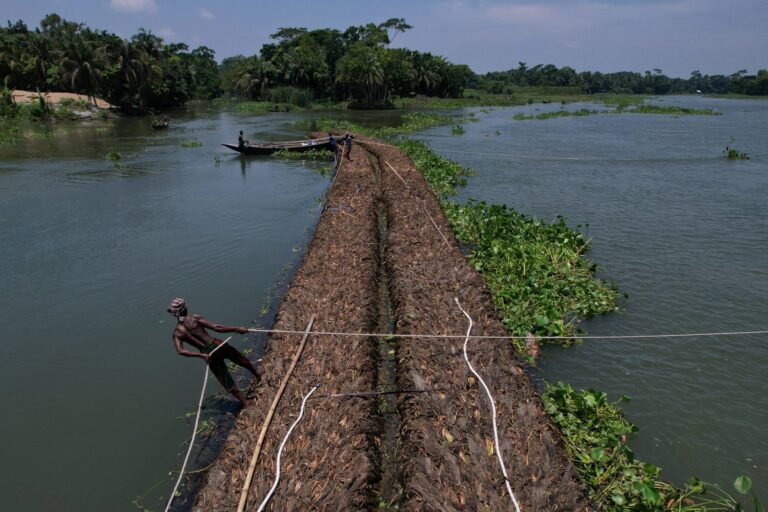 Farmers in Pirojpur, Bangladesh move a floating raft on the Belua River. (Photo: Reuters).[/caption]
Farmers in Pirojpur, Bangladesh move a floating raft on the Belua River. (Photo: Reuters).[/caption]Lessons from Bangladesh could have global relevance as the world moves into a future where flooding is more likely to occur due to climate change. According to the United Nations Food and Agriculture Organization (FAO), floods caused $21 billion in crop and livestock losses in low- and lower-middle-income countries between 2008 and 2018. A study published last year found that 1.8 billion people globally are directly exposed to flood risk.
“Bangladesh is facing all kinds of disasters,” said Abdullah Al-Maruf, professor of geography and environmental studies at the University of Rajshahi in Bangladesh. “With rising sea levels, the Bengal Delta will be submerged. We need to spread the story of floating gardens so that others can learn from them.”
In recognition of the potential of floating gardens, in 2015 the FAO listed 2,500 hectares of floating gardens in Bangladesh as one of 62 globally important agricultural heritage systems. It is estimated that the country could cultivate up to 2 million hectares of floating gardens.
Thanh Luan



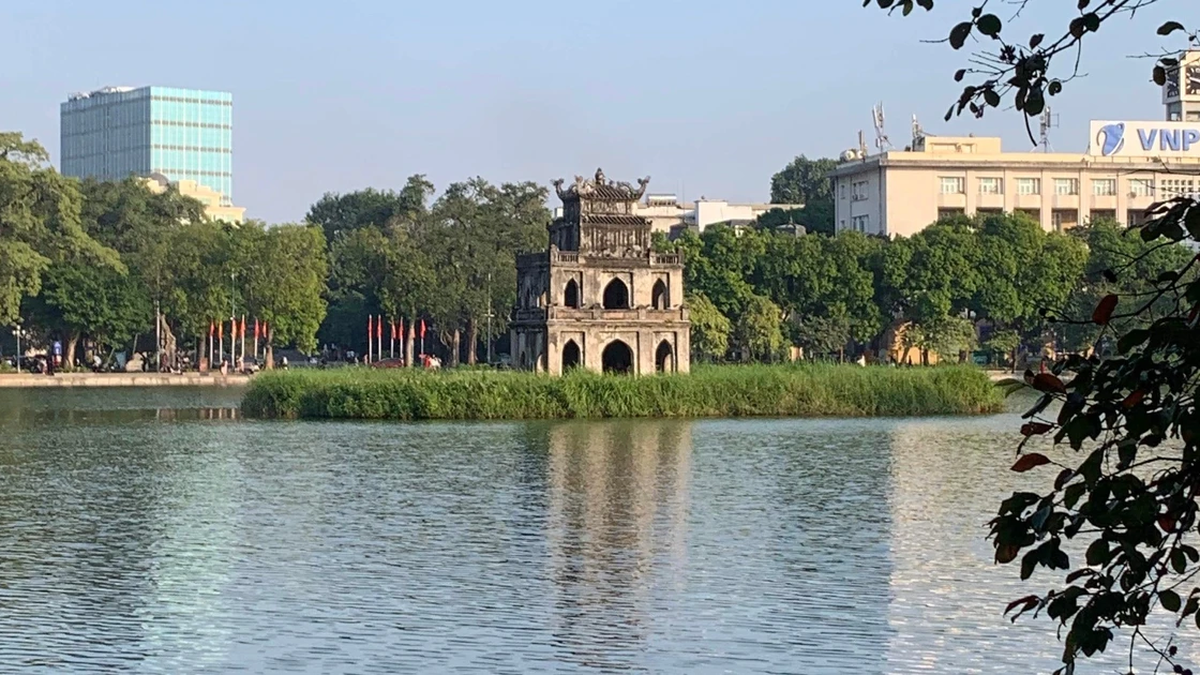




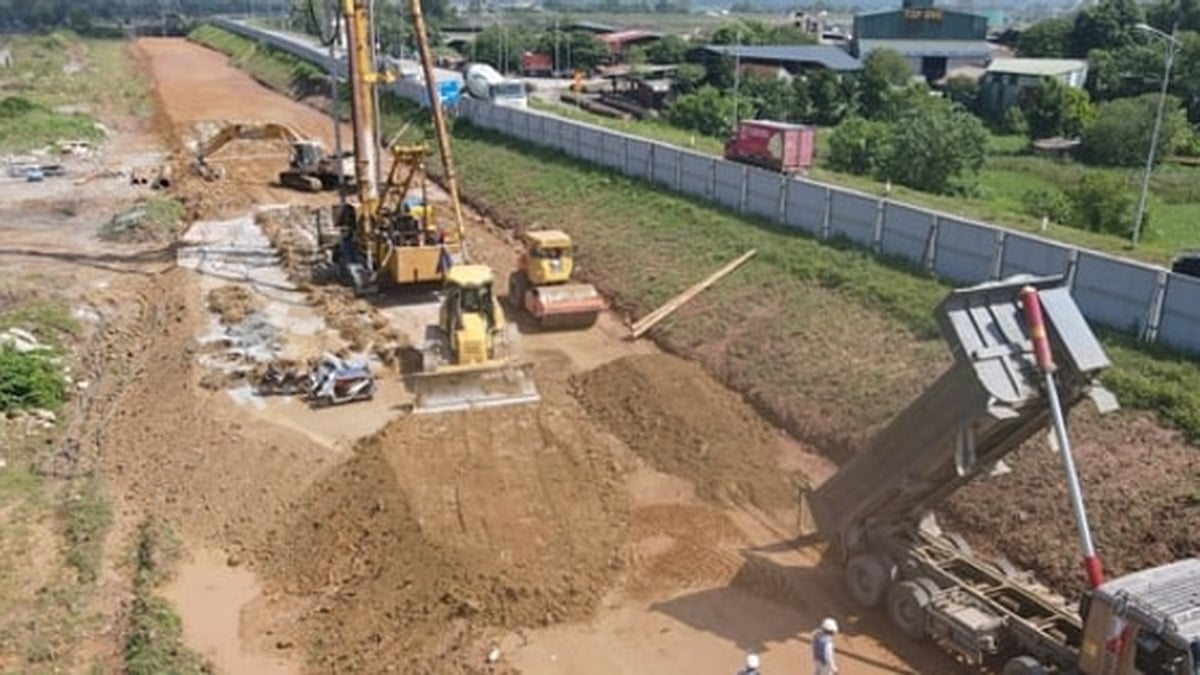

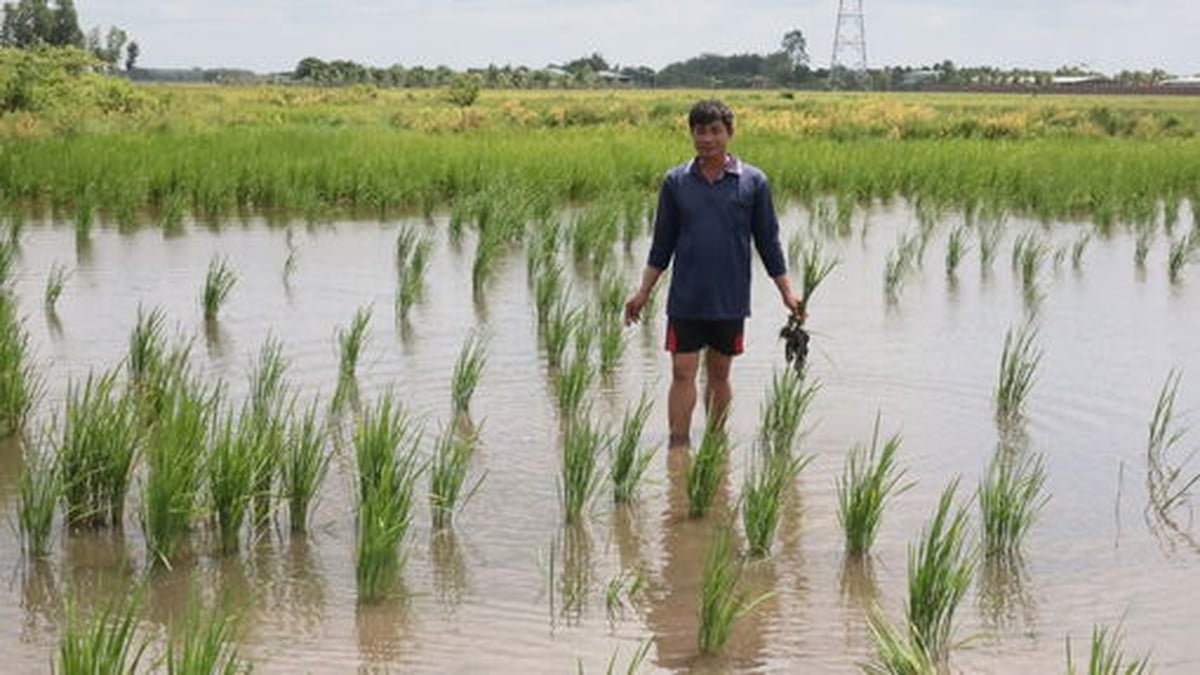












![[Photo] National Assembly Chairman Tran Thanh Man visits Vietnamese Heroic Mother Ta Thi Tran](https://vphoto.vietnam.vn/thumb/1200x675/vietnam/resource/IMAGE/2025/7/20/765c0bd057dd44ad83ab89fe0255b783)















































































Comment (0)